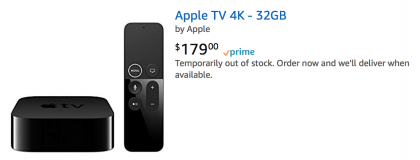Brian Heater, TechCrunch:
Users who’ve downloaded the smart assistant on iOS will be able to ask the app for assistance starting today. It’s not baked-in natively, of course (turns our Apple’s got a smart assistant of its own it’s pretty fond of), so that interaction requires a tap of the button.
From there, however, you can ask Alexa questions, listen to music, access skills and control smart devices — you know, the standard Alexa fare. Queries like weather, sports, calendar and movies will also offer up a visual component in the app. The update will be rolled out to users in “the coming days” as a free download.
Key to me is the fact that Alexa is playing on Siri’s home turf. Alexa will never have access to the Home button, or to a gesture at the top of the iPhone interface. Same story on Android, where Alexa takes a back seat to Google-person.
Amazon tried to enter the phone market with Fire Phone back in 2014, but (from the Fire Phone Wikipedia page):
The phone received mixed reviews. Critics praised the Dynamic Perspective, Firefly and, to a lesser extent, the packaged headphones, but derided the build, design, Fire OS version of Android, specifications, and exclusivity to AT&T. Amazon did not release sales figures for any of its devices, but based in part on its quickly declining prices and an announced $170 million write-down, analysts have judged it having not been commercially successful. Amazon ceased production of the Fire Phone in August 2015 and discontinued sales soon after.
They’ve since relied on their own in-home devices, to great success, but they’ve conceded the mobile space, forced to hide Alexa in an app.
Will this matter in the long run? I think it will, assuming Siri continues to improve and that Apple matches Amazon’s in-home solutions over time. For example, Amazon has a low priced in home speaker. Apple does not.
Amazon makes a TV box that can be controlled by Alexa, hands-free. AppleTV is a better product, no question, but it does not, out of the box, allow you to use your voice to control your TV.
As an example, once you’ve set up your Fire TV Cube, you can ask Alexa to change the channel, to lower the volume, or go back 2 minutes in the movie, all with your hands immersed in some messy cooking project. HomePod does not yet offer that sort of control.
If and when Siri and HomePod add the capabilities demonstrated by Amazon, I see Amazon’s lack of a phone as an advantage that will tilt the playing field in Apple’s direction.

